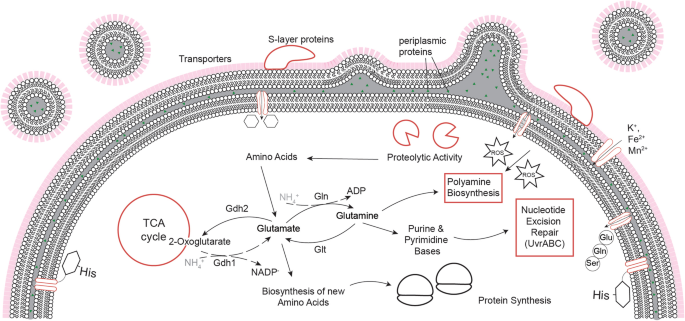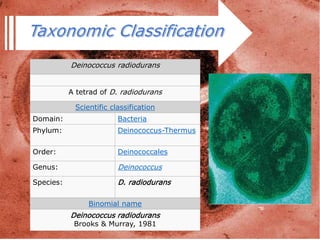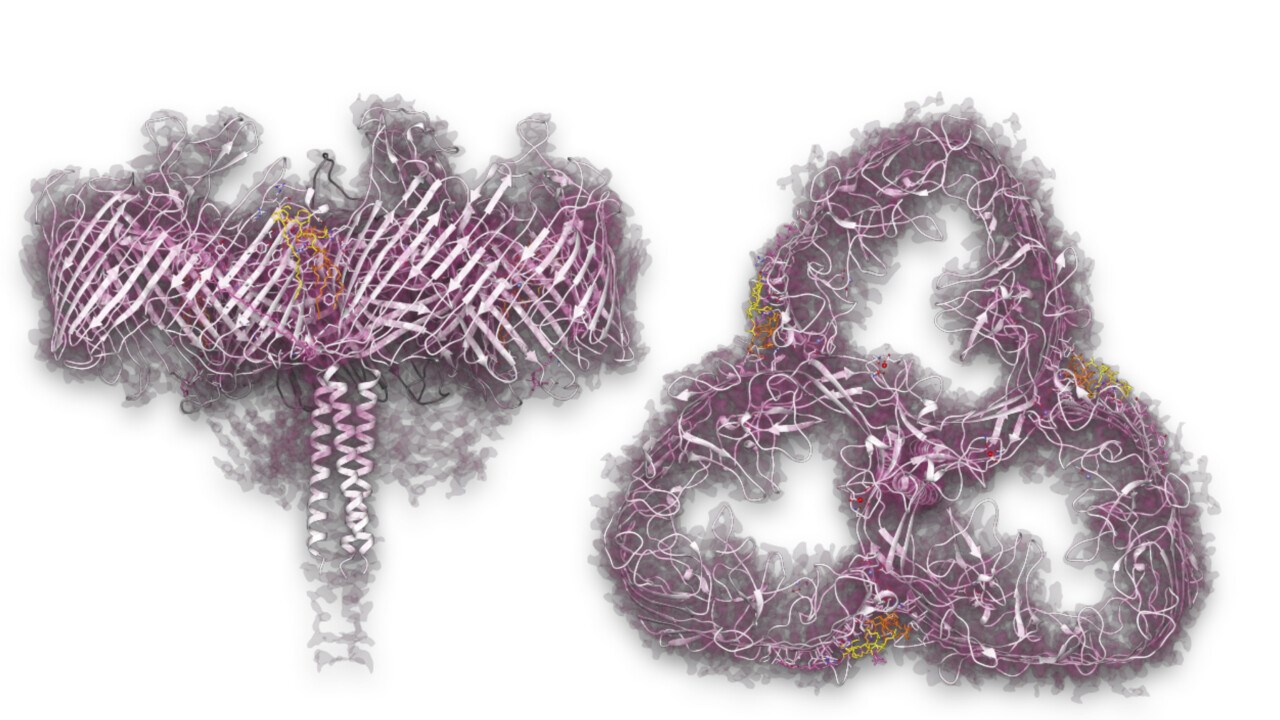Molecular repertoire of Deinococcus radiodurans after 1 year of
Por um escritor misterioso
Last updated 22 dezembro 2024

Background The extraordinarily resistant bacterium Deinococcus radiodurans withstands harsh environmental conditions present in outer space. Deinococcus radiodurans was exposed for 1 year outside the International Space Station within Tanpopo orbital mission to investigate microbial survival and space travel. In addition, a ground-based simulation experiment with conditions, mirroring those from low Earth orbit, was performed. Methods We monitored Deinococcus radiodurans cells during early stage of recovery after low Earth orbit exposure using electron microscopy tools. Furthermore, proteomic, transcriptomic and metabolomic analyses were performed to identify molecular mechanisms responsible for the survival of Deinococcus radiodurans in low Earth orbit. Results D. radiodurans cells exposed to low Earth orbit conditions do not exhibit any morphological damage. However, an accumulation of numerous outer-membrane-associated vesicles was observed. On levels of proteins and transcripts, a multi-faceted response was detected to alleviate cell stress. The UvrABC endonuclease excision repair mechanism was triggered to cope with DNA damage. Defense against reactive oxygen species is mirrored by the increased abundance of catalases and is accompanied by the increased abundance of putrescine, which works as reactive oxygen species scavenging molecule. In addition, several proteins and mRNAs, responsible for regulatory and transporting functions showed increased abundances. The decrease in primary metabolites indicates alternations in the energy status, which is needed to repair damaged molecules. Conclusion Low Earth orbit induced molecular rearrangements trigger multiple components of metabolic stress response and regulatory networks in exposed microbial cells. Presented results show that the non-sporulating bacterium Deinococcus radiodurans survived long-term low Earth orbit exposure if wavelength below 200 nm are not present, which mirrors the UV spectrum of Mars, where CO2 effectively provides a shield below 190 nm. These results should be considered in the context of planetary protection concerns and the development of new sterilization techniques for future space missions. Video Abstract

Genome Sequence of the Radioresistant Bacterium Deinococcus radiodurans R1

PDF) Conjugation-based genome engineering in Deinococcus radiodurans

Probing the sORF-Encoded Peptides of Deinococcus radiodurans in Response to Extreme Stress - ScienceDirect

Molecular response of Deinococcus radiodurans to simulated microgravity explored by proteometabolomic approach

Genome of the Extremely Radiation-Resistant Bacterium Deinococcus radiodurans Viewed from the Perspective of Comparative Genomics

PDF] Proteometabolomic response of Deinococcus radiodurans exposed to UVC and vacuum conditions: Initial studies prior to the Tanpopo space mission

A multidomain connector links the outer membrane and cell wall in phylogenetically deep-branching bacteria

The scientific revolution that unraveled the astonishing DNA repair capacity of the Deinococcaceae: 40 years on

Deinococcus radiodurans PprI Switches on DNA Damage Response and Cellular Survival Networks after Radiation Damage - ScienceDirect

A multidomain connector links the outer membrane and cell wall in phylogenetically deep-branching bacteria

Genome of the Extremely Radiation-Resistant Bacterium Deinococcus radiodurans Viewed from the Perspective of Comparative Genomics

A multidomain connector links the outer membrane and cell wall in phylogenetically deep-branching bacteria
Recomendado para você
-
 Deinococcus radiodurans: Radiation resistance – The Microbial22 dezembro 2024
Deinococcus radiodurans: Radiation resistance – The Microbial22 dezembro 2024 -
Efficient bioremediation of radioactive iodine using biogenic gold22 dezembro 2024
-
 Bacterial isolation from a kitchen dish towel reveals the presence22 dezembro 2024
Bacterial isolation from a kitchen dish towel reveals the presence22 dezembro 2024 -
 Radiation-Eating Bacteria: Deinococcus Radiodurans. - BioLabTests22 dezembro 2024
Radiation-Eating Bacteria: Deinococcus Radiodurans. - BioLabTests22 dezembro 2024 -
Thin section electron micrograph of (a) D. radiodurans R1 tetrad22 dezembro 2024
-
 Metabolic engineering of Deinococcus radiodurans for pinene22 dezembro 2024
Metabolic engineering of Deinococcus radiodurans for pinene22 dezembro 2024 -
 Deinococcus radiodurans22 dezembro 2024
Deinococcus radiodurans22 dezembro 2024 -
Deinococcus radiodurans22 dezembro 2024
-
 Radiation resistant bacteria, SEM - Stock Image - B244/006122 dezembro 2024
Radiation resistant bacteria, SEM - Stock Image - B244/006122 dezembro 2024 -
 Extremely tough bacteria's resistance under the microscope22 dezembro 2024
Extremely tough bacteria's resistance under the microscope22 dezembro 2024
você pode gostar
-
 New trending GIF tagged gif batman fight henry…22 dezembro 2024
New trending GIF tagged gif batman fight henry…22 dezembro 2024 -
 Activate the Humble Indie Bundle on Steam - Wolfire Games Blog22 dezembro 2024
Activate the Humble Indie Bundle on Steam - Wolfire Games Blog22 dezembro 2024 -
 Panflix VAI FERVER! Corinthians ENFRENTA o Vasco hoje em JOGO22 dezembro 2024
Panflix VAI FERVER! Corinthians ENFRENTA o Vasco hoje em JOGO22 dezembro 2024 -
 Noble Intention Event Launch22 dezembro 2024
Noble Intention Event Launch22 dezembro 2024 -
Dragon Ball Super: Broly (Dublado) – Filmes no Google Play22 dezembro 2024
-
 St. Louis soccer comes full circle as CITY SC make MLS home debut22 dezembro 2024
St. Louis soccer comes full circle as CITY SC make MLS home debut22 dezembro 2024 -
 LEGO Star Wars Space Battle22 dezembro 2024
LEGO Star Wars Space Battle22 dezembro 2024 -
 TUBBO IS LOST CRAB RAVE Greeting Card for Sale by luvpupi22 dezembro 2024
TUBBO IS LOST CRAB RAVE Greeting Card for Sale by luvpupi22 dezembro 2024 -
 TOP 15 MELHORES JOGOS DE TIRO XBOX GAME PASS 202222 dezembro 2024
TOP 15 MELHORES JOGOS DE TIRO XBOX GAME PASS 202222 dezembro 2024 -
 Levy Rozman of Gothamchess: The Internet's Chess Teacher, by Ikechukwu Victor Oji22 dezembro 2024
Levy Rozman of Gothamchess: The Internet's Chess Teacher, by Ikechukwu Victor Oji22 dezembro 2024
